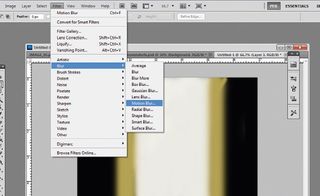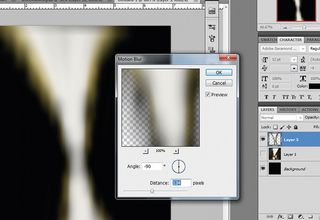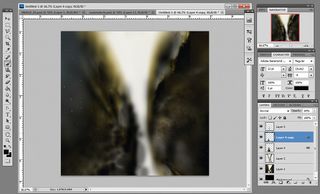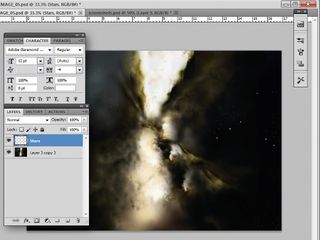Jung/Dynamisch/Sylt: The Thomas design affair
When design duo Henning Thomas and Thomas Erven created Jung/Dynamisch/Sylt, it was with one thing in mind: freedom
They met while working at Wethepeople Bike Company – their first proper jobs in the industry. Within a year they’d decided to leave and go it alone, and Jung/ Dynamisch/Sylt was born. Encompassing product and graphic design, photography and illustration, the studio is the brainchild of Henning Thomas and Thomas Erven. They’ve both been drawing for as long as they can remember. As a child, Thomas was fascinated by cars. Erven wasn’t quite so discerning, but he knew design was the only career for him.

“At some point,” Thomas says, “I discovered that design is much more than just car design, and that I would be able to design and invent such a wide range of things as a product designer that I decided that’s what I’d study.” The realisation led him to the integrated product design course at Coburg University of Applied Science.
“When it was time to decide what I wanted to do for a living,” Erven says, “there wasn’t really anything else I could think of. Or do.” He learned his trade at art school in Aachen, where he studied under respected German designer and illustrator Ilka Helmig. “She pretty much opened up a completely new view of how to approach a project for me,” he says.
As Jung/Dynamisch/Sylt, Thomas is product designer and Erven graphic designer. Erven is self-effacing about his work: “I think I’ll leave it to other people to decide what style that may be,” he says, when asked about his aesthetic. Thomas, on the other hand, is more forthcoming. His creative philosophy is derived from an unlikely source – Baloo from The Jungle Book. “Look for the bear necessities; the simple bear necessities,” he smiles. “Keeping it simple is a good thing when it comes to product design. But I try to have an eye on details that make the stuff unique and precious for the people who use the product. I’m always trying to give something to explore – like a paisley lining inside a dinner jacket. I would describe it as simplicity mixed with unexpected randomness.”

Skateboard and BMX culture, which they both grew up with in the 80s, also heavily influence their work. Recent projects include the design of the logo, website and merchandise for indoor skatepark Halle 59; decals for the 2013 Wethepeople Trust BMX bike; and numerous bicycle parts for revered brands such as Salt Plus and Eclat. Elsewhere, the pair have crafted a subtle but stylish site redesign for ‘social merchandising’ company The Hundreds, as well as striking flyers for Berlin fashion agency A-GAME, and handled the entire pre-production process – from sample drawings, descriptions and materials, to 3D visualisations and beyond – for shoe and apparel manufacturer Almond Footwear.
But boards and bikes are never far from Jung/Dynamisch/Sylt’s work, as evident in a recent foray into furniture design, which produced a distinctive hallway bicycle rack and a wardrobe complete with space to hang your skateboard next to your clothes. These designs have a strange elegance – formed of solid alder and solid acacia wood by the pair’s carpenter friend Gerrit Rehmann – but are also functional and, crucially, space-saving.
Both pieces took time and considerable effort to produce. But while things don’t always go plan at Jung Dynamisch/Sylt, Thomas extols the virtues of failure: “It’s important to know what doesn’t work before you can find a proper solution for a given task,” he says.

Erven expands on the Jung/ Dynamisch/Sylt workflow: “Working for a client means that you have to force ideas. It’s classic design process: analyse what is needed, talk to the client, try to find out what the product looks like in their head, mix this up with the stuff we want to have and at the end of the day you will have a fine result. On the contrary, stuff like the bike rack or the wardrobe just had their time to grow. We took our time and always sketched or wrote down all the different ideas. The bike rack, for example, is the result of half a year’s worth of thoughts about how to store your bike in your flat.”
For both Thomas and Erven, this is what running their own studio is all about: freedom. “Doing what is best for me, when it is best,” as Thomas puts it. “I enjoy being in charge of everything. You get a whole different look at things you do when you have to do it all by yourself.” Erven likes the responsibility and selfreliance it brings: “You are the only one to blame if something goes horribly wrong,” he reflects.
But their first year as Jung/ Dynamisch/Sylt has been a successful one. As one project has drawn to a close another has presented itself, each bigger than the last. Thomas stresses, however, that there’s no room for complacency. He hopes the best is yet to come. Erven backs him up: “Every new day has to be the highlight, otherwise you get lazy.”
Driven by a shared vision of what great design can be, Thomas and Erven are looking to build on their early successes. “In my opinion,” Thomas says, “it’s down to the individual, their point of view, and the stories or feelings connecting a person to a product. Great design accounts for the interests and needs of the person engaging with it. Even if it’s just by making them smile when they look at it. Some things just feel like a present, and give you a good and feeling. That makes the difference.” Erven, as terse as ever, concludes: “Good design works; great design makes you think.”

Jung/Dynamisch/Sylt’s third piece of furniture is imminent, with work on a prototype beginning soon. “We know what it will be about,” says Thomas. But he’s not giving too much away: “It relates to the third big thing – beside bikes and skateboards – that’s really important in a big boy’s life in the city. I think we’ll have something nice ready for early 2013.”
“Since we survived the ‘end of the world’ on 21 December,” Erven adds, “anything is possible.”
Learn how to become an art director! Essential advice, over at Creative Bloq.

Thank you for reading 5 articles this month* Join now for unlimited access
Enjoy your first month for just £1 / $1 / €1
*Read 5 free articles per month without a subscription

Join now for unlimited access
Try first month for just £1 / $1 / €1
Get the Creative Bloq Newsletter
Daily design news, reviews, how-tos and more, as picked by the editors.
The Creative Bloq team is made up of a group of design fans, and has changed and evolved since Creative Bloq began back in 2012. The current website team consists of eight full-time members of staff: Editor Georgia Coggan, Deputy Editor Rosie Hilder, Ecommerce Editor Beren Neale, Senior News Editor Daniel Piper, Editor, Digital Art and 3D Ian Dean, Tech Reviews Editor Erlingur Einarsson, Ecommerce Writer Beth Nicholls and Staff Writer Natalie Fear, as well as a roster of freelancers from around the world. The ImagineFX magazine team also pitch in, ensuring that content from leading digital art publication ImagineFX is represented on Creative Bloq.
